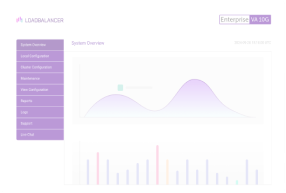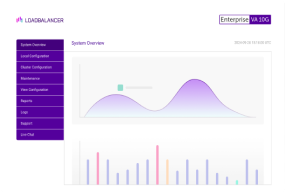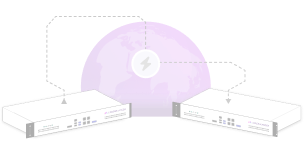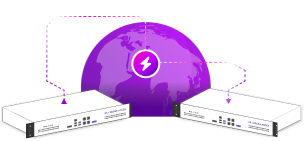
Scale-out NAS (Network Attached Storage) and object storage are by far the two most popular architectures available in the storage market today. They are considered to be the most well-equipped solutions to manage the exponential growth of unstructured data that has overtaken the digital world.
While data storage was simple once upon a time – it isn’t anymore. With the massive influx of emails, PDFs, images, videos, web content, and more, businesses right now are scrambling for better ways to store information. Although the tech gods have come up with a range of choices, zeroing in on the right storage option is not always easy. Amid the ongoing debate, here's our brief overview of scale-out NAS and object storage: the two major contenders in the storage space.
The new and improved NAS: effective as well as scalable
Scale-out NAS is based on a traditional file system comprising files organized in hierarchical directories, enabling organizations to neatly categorize individual files for later use. Due to its ease of operation, lower cost, convenient data backup, and reliable centralized data storage ability, the NAS approach is rapidly becoming popular with enterprise and small businesses in many industries.
NAS can be used for email servers, virtual machines, databases, and file servers – as such, for enterprise environments where files may need to be accessed, shared, and edited dynamically by many users, the single, highly scalable file system of NAS is best suited.
Furthermore, NAS architectures can boost performance and simplify management for unstructured data storage. As storage grows, the system allows simplified management across separate physical modules without the need to add filers.
Familiarity and compatibility make file storage, and therefore NAS, prevalent. The main benefits of using NAS for unstructured data storage are:
- it's organized
- it's user-friendly
- it's relatively fast
- it supports applications where the data changes quickly
Besides, NAS is also ubiquitous with many services supporting NFS (Network File System) or SMB (Server Message Block) storage.
With a NAS, information is stored in one place. This facilitates continuous data accessibility, making it easy for employees to collaborate, promptly follow up on sales or other issues, and respond to customers in a timely fashion. As NAS is like a private cloud, you can access data remotely using a network connection, making it possible for employees to work from anywhere, anytime.

Object storage: a simple solution for complex storage needs?
Object storage is a reliable, efficient, and affordable way of:
- storing
- archiving
- backing up, and
- managing huge volumes of static or unstructured data
The approach adds metadata to files, allowing stored data to be retrieved more quickly. The metadata table stores attributes that describe the underlying data, such as file name, user ID, creation date, and the location from which the data can be retrieved. Designed to be massively scalable, object storage is a new storage paradigm with a very simple interface. It is a 'flat' structure and naming convention that organizes information into containers of flexible sizes referred to as objects.
Each object includes the data itself and its associated metadata and has a globally unique identifier name. The architecture is ideal for storing large volumes of files that will be accessed but not changed.
Besides storing humongous amounts of data, object storage also allows access to large amounts of disparate data sources for analytics and advanced reporting which traditional storage fails to offer. No matter where a particular type of data is stored, object storage is intelligent enough to find that data whenever a related query is fed in. It also ensures improved efficiency while managing very large quantities of data, thus making it a high-performance, cost-effective solution ideal for long-term data retention.
Many object storage systems use a highly disk-efficient technology called 'erasure coding' to protect data. Some can even automatically expire and purge data based on a set of predefined policies. This helps reduce the total cost of ownership (TCO) associated with managing unstructured data. Additionally, to ensure greater application 'data awareness', existing business applications can be coded through an API to interface directly with the object storage repository.
Object-based storage is most commonly used in cloud computing and is the basis for leading online storage services such as YouTube, Dropbox, and Amazon Cloud.

The Loadbalancer.org verdict
Before scale-out NAS, if you wanted scalability, object storage, and its unique approach to storing files and metadata was the obvious choice. With NAS developments closing the scalability gap, now both storage choices have similar capacity and performance benefits – so there are advantages to using both.
While all signs may indicate that the digital universe is trending towards an IT environment more suited for object-based storage, file-level solutions like NAS still have their place in today’s storage landscape. For instance, if your applications include fast-changing data and streamlined access, NAS is probably your best option. But, if your storage needs are more archival, centered around huge workloads or Big Data, and doesn’t need a super high-level of native integration with applications, object storage is the way to go.
Earlier, NAS and object storage used to operate in separate spaces, but of late, there has been a lot of convergence between the two technologies. For example, the protocol S3 (Amazon Simple Storage Service) used to be exclusive to object storage but is now available on NAS platforms as well. As such, organizations that previously only considered object storage may now wish to also consider NAS. Some vendors are even deliberately blurring the differences between the two – thereby offering customers the advantages of hybrid systems.
Be it scale-out NAS or object storage, orchestrating a load balancer always helps ensure scalability, high availability, and zero downtime in your storage framework. Irrespective of the environment, a load balancing solution significantly improves the performance of your storage architecture by distributing traffic evenly across all storage clusters and preventing network bottlenecks. Modern load balancers can count connections on individual storage nodes within scale-out NAS and object storage systems – no matter how large these storage environments become – and dynamically direct traffic away from storage nodes with failed disks to other healthy nodes in order to optimize performance for users.
Read our white papers for more about our storage expertise – or contact us to discuss any load balancing requirements related to your storage infrastructure.
















